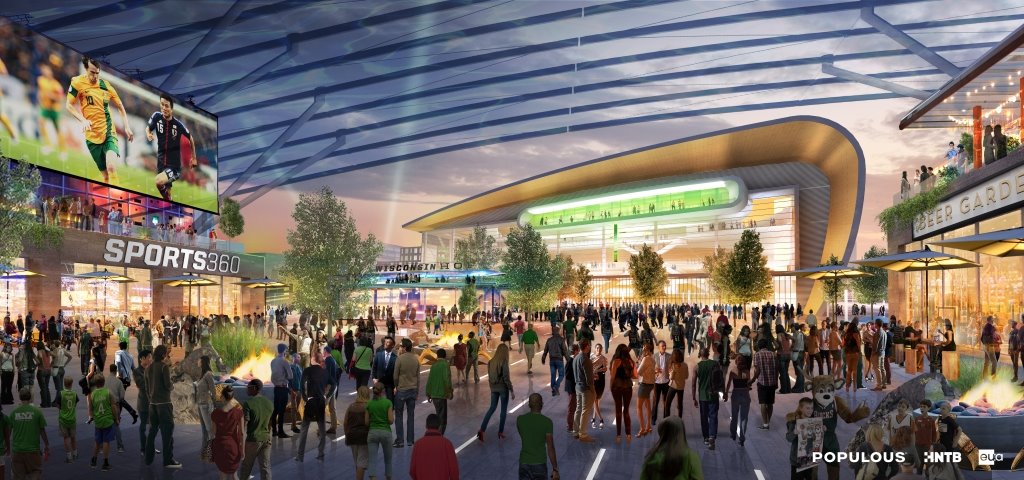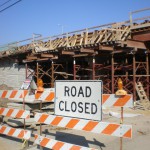Vacating Fourth Street for a Bucks plaza would be drastic and risky
Vacating any downtown street involves major ramifications for current and future transportation and land use.
The city’s proposed funding package for a Milwaukee Bucks arena complex includes the ceding of North Fourth Street between Highland and Juneau Avenues. Subsidies will be voted on by the Common Council on Tuesday, September 22.
Vacating any downtown street involves major ramifications for current and future transportation and land use. An amendment introduced by Ald. Bob Bauman, which passed in committee, would remove the proposed stipulation allowing the permanent closing of one block of Fourth Street. We urge the Common Council to approve this amendment so that transparent planning and more study can proceed around this important civic issue.
The City of Milwaukee can then explore options to accommodate pedestrian and vehicular traffic near a new arena. That includes possibly permitting closures of Fourth Street during arena and some special events. This is commonly done near sports venues in Indianapolis, Seattle and Boston. A temporary pedestrian plaza can thus be created while otherwise retaining an open roadway for vehicles. New Orleans does this nightly with Bourbon Street. Milwaukee routinely does it for street festivals, Wisconsin Avenue night markets and Cathedral Square events.
We recommend commissioning an independent traffic study to analyze potential impacts and routing options. For example, with Fourth Street closed to vehicles at Highland, all northbound traffic would reach a dead-end there. That would require a right turn and then a left or right turn on Old World Third Street, a narrower street partially paved in brick. On weekend and event nights, there already is congestion on Third Street. Funneling more cars there could create bottlenecks in this historic district. It would be prudent to thoroughly examine implications of either temporarily or permanently increasing traffic there.
Southbound, Fourth Street traffic would dead-end at Juneau. Vehicles could proceed either east or west and then access either Third or Sixth streets, which could further overwhelm Third Street.
What might be impacts on Fourth Street north of Juneau into Bronzeville, since traffic would be diverted from there? The Ace Hardware complex at Fourth Street and McKinley Avenue is being redeveloped as offices and tavern. Adjacent Park East will eventually be developed. Retail enterprises will especially benefit from Fourth Street remaining a thoroughfare that connects to the Milwaukee Intermodal Station.
When pedestrian malls are created, cities reconfigure streets without permanently ceding ownership and right-of-way. Long-term flexibility within the city grid is essential for urban planning. Successful pedestrian malls in the U.S. are the exception, not the rule. Of all pedestrian malls created since 1960, a whopping 89 percent have failed. They consistently have depressed downtown retail, not enhanced it, including along Chicago’s now-abandoned State Street mall. Most pedestrian malls have been restored as streets with vehicular traffic. It would be costly and complicated to try to reclaim Fourth Street once it has been foolishly given away and converted into a plaza for the Bucks.
Manhattan urban designer and planner Jessica Schmidt analyzed the issue: “For a pedestrian mall to be successful, a number of factors needs to be in place.…It is a highly contentious, complex legal and financial undertaking that demands serious long-term research and planning.” None of that happened in Milwaukee before a top-down decision was made to forever vacate Fourth Street.
Schmidt continues: “Newly-opened pedestrian malls at Times Square and Herald Square in New York City have been successful because of their location in highly trafficked areas and the lack of nearby outdoor seating.” A few others have succeeded in university settings or in areas with intense tourism or high-density housing. Pedestrian malls have not become “destinations” when created in low-traffic areas, however.
We look forward to more development in Westown. We want the entire convention and arena district to become more welcoming for everyone–pedestrians, bicyclists, and those using other modes of transportation. That new inclusive, flexible approach is called “Complete Streets,” in which no single mode dominates. To this end, we believe that major transportation decisions should be made within a comprehensive planning framework. That must include community engagement, full transparency and consistency with city policies and procedures. For example, a public notice is required before a Milwaukee street or alley can be vacated. Waiving that mandate up-ends fairness.
It’s unwise for arena deal-makers to try to railroad the development process. However, there’s s plenty of time to make well-reasoned decisions regarding Fourth Street. Arena construction will not begin before Spring 2016. Scant details have been presented for the Bucks proposed entertainment mall, which they want to build across from the arena on Fourth Street. The city proposes handing over a block-long garage to be razed for that purpose. Architects can creatively design within whatever parameters are established.
The City of Milwaukee should not vacate downtown streets unless no other option is available. The city should use sound planning to achieve mutually beneficial outcomes for the Milwaukee Bucks and for all residents and visitors who travel to and through downtown.
This letter is being signed by the following profesionals:
Barbara Aho, landscape designer
Michael H. Carriere, Ph.D., Associate Professor, Milwaukee School of Engineering, Director, MSOE University Scholars Honors Program
James Godsil, cofounder, Milwaukee Preservation Alliance, Milwaukee Renaissance Wiki Magazine
Lane Hall, co-founder, Overpass Light Brigade; educator and activist
Jamie M. Harris, Ph.D., Associate Director, Urban Studies Programs, UW-Milwaukee
Linda Keane, AIA, Professor, Architecture and Environmental Design, School of the Art Institute of Chicago
Mark Keane, Professor, Architecture, UW-Milwaukee
Julilly Kohler, developer
Aims McGuinness, Associate Professor, History, UW-Milwaukee
Joseph A. Rodriquez, Professor, History and Urban Studies, UW-Milwaukee; author, Bootstrap New Urbanism: Design, Race and Redevelopment in Milwaukee
Peggy Schulz, public-space and transit advocate
Virginia Small, researcher and writer
Walter Wilson, FAIA, retired Principal Architect, Milwaukee County
Research Notes:
Recently, the Downtown Fresno Partnership published the report, “American Pedestrian Malls: Trends Analysis, Necessary Indicators for Success and Recommendations for Fresno’s Fulton Mall.” The report (to be released soon) finds that Fresno’s Fulton Mall will be most successful as a Main Street, given the 89% failure rate of American pedestrian malls and the fact that Fresno does not have any of the indicators of success that the 11% successful pedestrian malls possess. The major findings of the report are:
- Pedestrian malls in the United States have an 89% rate of failure. Most have been removed or repurposed. Only 11% have been successful.
- Of the 11% successful pedestrian malls, 80% are in areas with populations under 100,000.
- Certain indicators need to be present for a pedestrian mall to be successful in the United States:
- Attached to a major anchor such as a university (i.e. Boulder)
- Situated in close proximity to a beach (i.e. Miami, Santa Monica)
- Designed to be a short length in terms of blocks (1-4 blocks long)
- Located in a community with a population under 100,000 (i.e. New Bedford, MA)
- Located in a major tourist destination (i.e. Las Vegas, New Orleans)
- Cities that have transformed their abandoned pedestrian malls into “Complete,” “Main” Streets have experienced turnarounds in their downtowns with more investment, higher occupancy rates and more pedestrian traffic. 90% of these cities see significant improvements in occupancy rates, retail sales, property values and private sector investment in the downtown area when streets are restored.
NOTE: This press release was submitted to Urban Milwaukee and was not written by an Urban Milwaukee writer. While it is believed to be reliable, Urban Milwaukee does not guarantee its accuracy or completeness.
Mentioned in This Press Release
Recent Press Releases by Press Release
A Dangerous Precedent
Dec 19th, 2025 by Press ReleaseDemocracy and civic organizations released a joint statement after yesterday’s verdict in the Judge Dugan trial.
Axis Communications opens its 19th Americas Experience Center in Milwaukee
Dec 8th, 2025 by Press ReleaseCutting-edge technology center will offer interactive access to customers and partners in Axis’ third-largest market in the upper Midwest






















